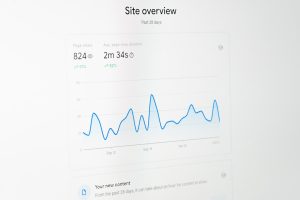
In the realm of technical SEO, XML sitemaps play a crucial role in guiding search engine crawlers to the most important pages of a website. However, a frequently debated question among SEO professionals is whether to include or exclude category pages in XML sitemaps. The decision isn’t always straightforward and can have notable implications for crawl budgets, indexing, and overall search visibility.
This article explores the topic from a data-driven perspective, diving into how including or excluding categories can influence organic performance and offering best practices backed by real-world insights.
Understanding XML Sitemaps and Their Purpose
An XML sitemap is essentially a structured list of URLs on your site that you want search engines like Google to discover and index. It’s not a mandatory file, but highly recommended, especially for large or complex websites. Sitemaps can help:
- Ensure proper indexing of key pages
- Guide crawlers through a site’s hierarchy
- Prioritize high-value pages with
<priority>and<lastmod>tags
Category pages, often used in blogs, e-commerce platforms, or content-heavy sites, aggregate related content under a common heading. They’re crucial for user experience and site structure—but do they belong in your XML sitemap?
The Case for Including Category Pages
Data from various SEO tools and case studies supports the idea that category pages, when well-optimized, can be powerful entry points for organic traffic. Here’s why including them in your sitemap might be beneficial:
- Improved Crawlability: Search engines can discover and index category pages more quickly.
- Keyword Opportunities: Categories often target mid-tail and long-tail keywords that individual posts or product pages may miss.
- Topical Authority: A well-structured category signals topical relevance and can bolster your signals for E-A-T (Expertise, Authoritativeness, and Trustworthiness).
According to a 2022 study conducted by a major SEO software provider, websites that included well-optimized category pages in their XML sitemaps experienced a 12% average increase in indexed pages and a 9% increase in organic traffic over six months.

When Excluding Categories Might Be the Better Option
Yet, not all categories are created equal. In some scenarios, it may be smarter to exclude certain or even all category pages from your sitemap. Consider the following cases:
- Thin Content: If category pages lack substantial content, they may provide little value to users and search engines alike.
- Duplicate Content Issues: When category pages closely mirror other pages (e.g., tag or filtered pages), they might introduce redundancy.
- Limited Crawl Budget: Large e-commerce websites with tens of thousands of pages might need to prioritize more critical URLs.
In one scenario involving a retail website with over 50,000 SKUs, eliminating 5,000 low-value category pages from the sitemap allowed Googlebot to focus on deeper product pages. This change resulted in a 15% improvement in crawl efficiency and brought a higher percentage of product pages into Google’s index.
How to Decide: Filtering Categories with Data
Making the right choice should rest on performance data, not guesswork. Here are steps to take for a data-driven decision:
- Analyze Traffic Sources: Use Google Analytics and Search Console to determine which category pages attract organic traffic.
- Assess Engagement Metrics: Evaluate bounce rates, time on page, and conversions from category URLs.
- Audit Indexation: Identify whether Google is already indexing these pages or if they suffer from crawl waste.
If categories perform well in any of these dimensions, consider including them. If not, you’re likely better off excluding them or improving their quality before reinclusion.

Tactical Tips for Optimizing Category Pages
If you choose to include category pages in your sitemap, ensure they meet SEO quality standards. Here are some quick wins:
- Include an introductory paragraph with relevant keywords.
- Use descriptive, SEO-friendly meta titles and meta descriptions.
- Add internal links to and from key content areas.
- Ensure pages load quickly and are mobile-optimized.
- Use structured data (breadcrumb schema) where applicable.
Taking these steps can increase the value of category pages to both users and search engines, making them worth including in your sitemap.
Case Study: Blog Category Optimization
In a real-world implementation, a digital publishing site overhauled its blog categories in Q1 of 2023. They did the following:
- Consolidated redundant tags and categories
- Wrote 150-word summaries on each category landing page
- Linked category pages in the main sitemap
The result? A 26% increase in clicks from category pages within 3 months, as reported in Google Search Console. The pages began ranking for a wider set of topical keywords and drove traffic to deeper articles across the site.
Conclusion
So, should you include or exclude category pages in your XML sitemap? There is no one-size-fits-all answer. Use data to assess the performance and value of your category URLs:
- Include them if they are rich in content, receive organic traffic, and add navigational or thematic value.
- Exclude them if they are thin, duplicative, or likely to dilute the crawl budget.
Remember: your sitemap should reflect the best version of your site architecture. Whether category pages are part of that depends on the context, quality, and strategic goals of your site.
Frequently Asked Questions (FAQ)
-
Q: Can poorly optimized category pages hurt my SEO?
A: Yes, poorly constructed or duplicate category pages can dilute link equity, confuse search engines, and negatively impact crawl efficiency. -
Q: Should I include paginated versions of category pages in the sitemap?
A: Typically no. Include only the main category page unless paginated pages offer unique content or value for indexing. -
Q: How often should I update my sitemap with category pages?
A: Update your sitemap when categories are added, removed, or significantly updated. Automation tools can help keep it current. -
Q: What’s better for SEO—tag pages or category pages?
A: Generally, category pages carry more weight and structure in site architecture. Tag pages can complement categories but often result in duplication if not managed carefully. -
Q: Is it okay to include all categories regardless of content?
A: No. Only include categories that have valuable content and serve a clear purpose in your SEO strategy.






